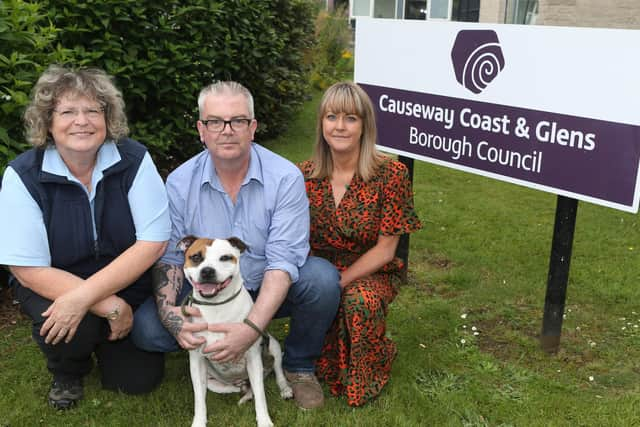Causeway Coast and Glens Council urges dog owners to exercise caution over certain breeds
and live on Freeview channel 276
Council’s aim is to raise awareness among dog owners and anyone considering rescuing or purchasing a dog that some breeds carry with them a higher degree of risk, with an attack having a much greater chance of resulting in a fatality.
A Council spokesperson said: "Since 2020 there have been 21 cases of dogs fatally attacking humans in the UK, and 15 of these fatal attacks were carried out by bull terriers and bull terrier crosses, including the recently introduced breed known as XL Bullies. Statistics from the USA show that only 6% of dogs in the USA are Pitbull types, but they are responsible for two thirds of all fatalities.”
Advertisement
Advertisement
Ciaran Doran, Environmental Health Manager explained: “We do not want to make certain breeds of dogs villains or unnecessarily panic the public, but it is important to understand why certain dog breeds are higher risk.


“In terms of bulldog breeds and crosses, the simple explanation for the reason they present a higher risk should they attack is because they are physically strong powerful dogs and have a history of having been bred for fighting.
“Bulldogs are so called because they were traditionally used for the now outlawed sport of bull baiting, where a bull would be tied up in public and packs of dogs set on them until the bull collapsed due to exhaustion or injuries. These dogs were subsequently bred with terrier dogs to produce the Bull Terrier. When bull baiting was outlawed, dogs fighting each other became popular and as these fights took place in ‘pits’, the Pitbull Terrier came into existence.
"It is important to note that although such dogs were bred for fighting, they were also bred to be very human friendly and in Victorian times Pitbulls and Staffordshire Bull Terriers were known as ‘nanny dogs’ because they were good family pets.
Advertisement
Advertisement
“Through time, breeders would develop dogs that were powerful and willing to fight for long periods of time. This is why when these dogs attack the results can be fatal.
“Many dogs will go through several warning stages before attacking such as growling, barking, freezing still, showing heckles on their backs, licking lips all of which can indicate to humans to back off before an attack takes place.
“Fighting breeds may not necessarily show these warnings and anecdotal stories of fighting breed attacks show dogs that were perfectly placid one minute and the next carried out a savage attack, seemingly out of the blue.”
It is not just bull terrier breeds that have a history of having been bred for fighting. Other common breeds with this history include Japanese Akita, Shar Pei, Dogue de Bordeaux, Tibetan Mastiff, Kerry Blue Terrier, Presa Canario, Cane Corso. Even Rottweilers and Doberman dogs are listed as such.
Advertisement
Advertisement
Ciaran concluded: “Dog owners should also research dog behaviour, such as pack mentality, and have as much information as possible to allow them to be responsible dog owners who keep safe and happy pets.
“Finally, all dog owners should ensure they keep their dogs in secure premises to prevent straying and always keep your dog under control in public.”